In today’s world, WiFi connectivity is essential, and having access to it outdoors is becoming increasingly important. If you’re in the market for an outdoor WiFi range extender, there are many options to choose from. We’ve compiled a list of the top contenders, each with its own unique features, to help you make an informed decision. Here are our top picks:
- TP-Link EAP610-Outdoor: WiFi 6 with 1800Mbps speeds, weatherproof shell, and easy installation.
- CC Vector Extended Long Range WiFi Receiver System: Strong signal up to 3 miles away, supports multiple devices, and easy setup.
- WAVLINK Outdoor WiFi Extender: Dual-band up to 5GHz 867Mbps and 2.4GHz 300Mbps, weatherproof, and PoE support.
- TP-Link EAP225-Outdoor: Dual-band up to 1200 Mbps, weatherproof, and integrated into Omada’s SDN platform.
Whether you’re looking to extend WiFi coverage for your business or your home, these outdoor WiFi range extenders have a lot to offer. Let’s start with our best overall pick.
Best Overall: TP-Link EAP610-Outdoor
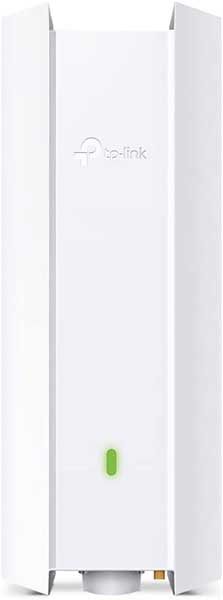
Key features:
- WiFi 6 technology with 1800Mbps speeds
- IP67 weatherproof enclosure for outdoor use
- Mesh WiFi and Seamless Roaming support
- Multiple PoE options for easy installation
The TP-Link EAP610-Outdoor is a top contender when it comes to wireless access points. This unit harnesses cutting-edge WiFi 6 technology, allowing for unbelievably fast dual-band speeds of up to 1800Mbps. We put this device through its paces both indoors and outdoors, discovering that its IP67 weatherproof shell offers great protection against inclement conditions while still providing exceptional wireless performance.
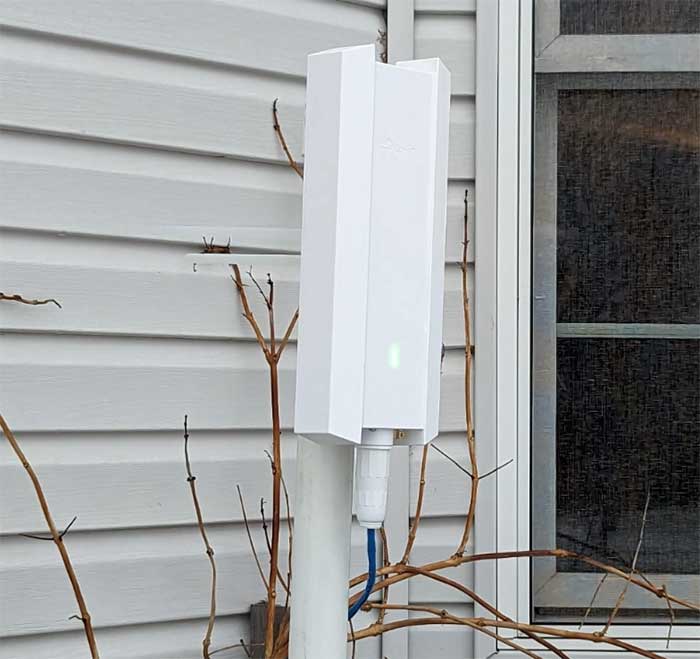
We were impressed by the unit’s discreet appearance, which blends seamlessly into any indoor or outdoor setting. Additionally, it supports a host of technologies, including:
- Seamless Roaming
- Mesh WiFi
- Airtime Fairness
- Band Steering
- Beamforming
- Load Balancing
With these features combined, it’s an excellent choice for large homes or small businesses. What’s more, the device can be managed through the Omada SDN platform. This solution provides unified cloud control of your entire network across various locations. It can also be set up in WiFi Range Extender mode, extending existing wireless coverage by repeating the wireless signal.
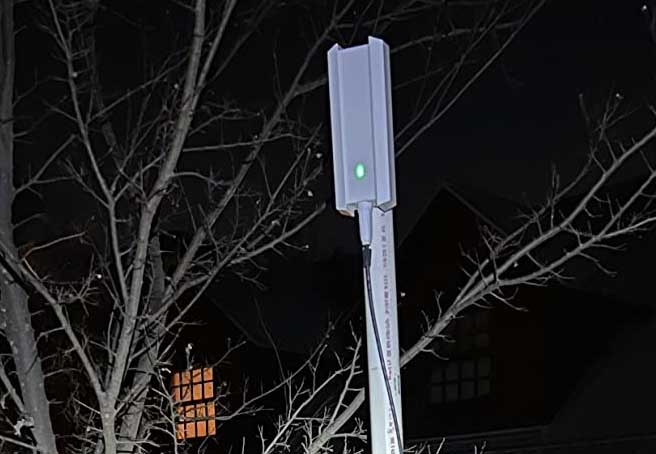
One of the distinguishing characteristics is the diverse PoE options for effortless installation. Not only does it support 802.3at PoE, but also 48V/0.5A Passive PoE power supply, making the setup fast and flexible.
Moreover, it measures 11.04 x 4.19 x 2.24 inches and weighs just 1.78 pounds. This makes the TP-Link EAP610-Outdoor a great choice for any outdoor environment. It also includes an adjustable mounting bracket and omnidirectional performance, so it’s easy to install in any location.
What we liked:
- Cloud management through Omada SDN platform
- Multiple control options for Omada devices
- Discreet appearance blends into any setting
- Dual-band WiFi speeds up to 1800Mbps
What we didn’t like:
- Limited compatibility with SDN firmware
- Higher cost than some other access points
Best Runner-Up: CC Vector Extended Long Range WiFi Receiver System
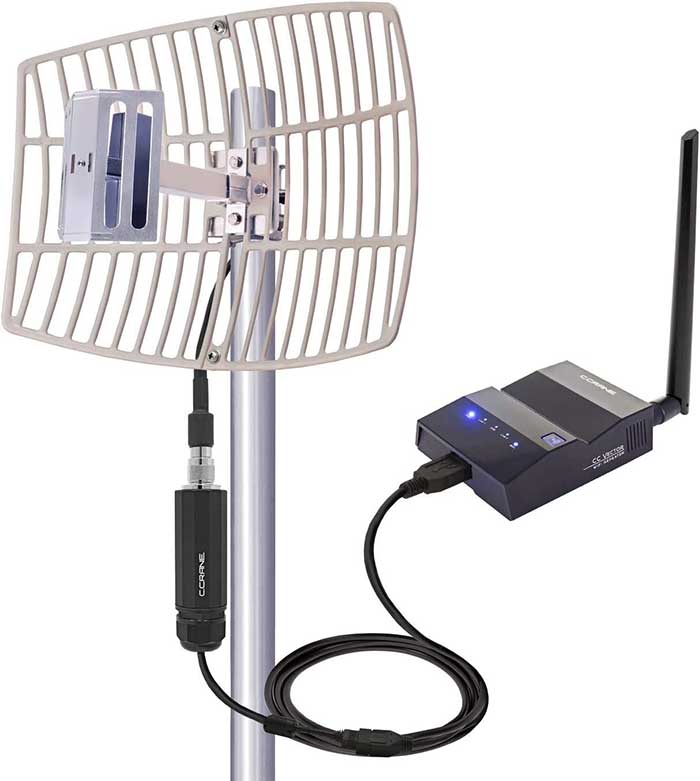
Key features:
- Durable parabolic antenna receives distant WiFi signals
- Replicates WiFi signal to multiple devices
- Two available Ethernet jacks for hard wiring
- US-based support provided by C. Crane
If you’re looking for a dependable and long-lasting solution to extend your WiFi signal into an area where it may be poor or nonexistent, check out C. Crane’s Vector Extended Long Range WiFi Receiver System. It’s a strong candidate for being the best option out there.
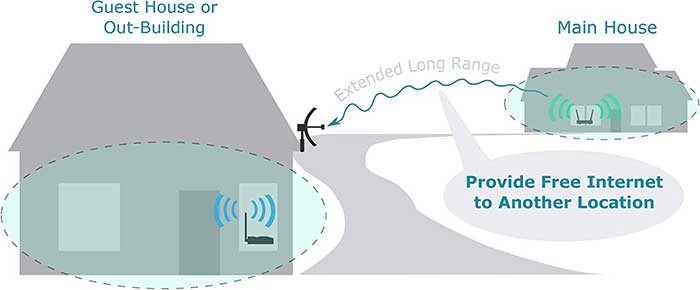
For one, this system has been designed with a 15 dBi parabolic antenna. That means you can look forward to decreased interference from other nearby networks. The result? You to access available signals up to 3 miles away! What’s more, dead zones are no longer a problem. You get reliable coverage in areas where you used to struggle to get any connection at all.
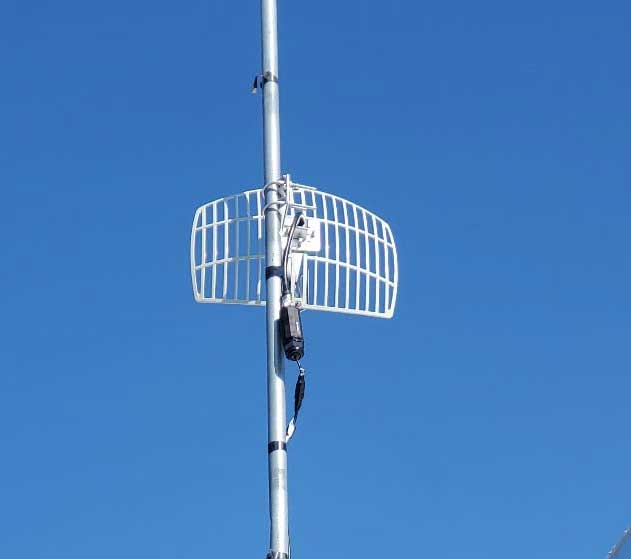
When connected to the CC Vector inside, it repeats a new WiFi signal for all devices to use and even supports multiple devices. Everything from gaming consoles to Windows, Android, and Apple devices connects with ease. Plus, there are two available Ethernet jacks, so you can hardwire additional computers or routers if needed.
For the non-tech savvy, setup is a breeze due to C. Crane’s US-based support staff. We like the high compatibility rate and the fact that this extender uses popular long-distance 2.4 GHz WiFi bands. And for short-range needs, there’s a 5GHz band. All of this ensures optimized performance across the board.
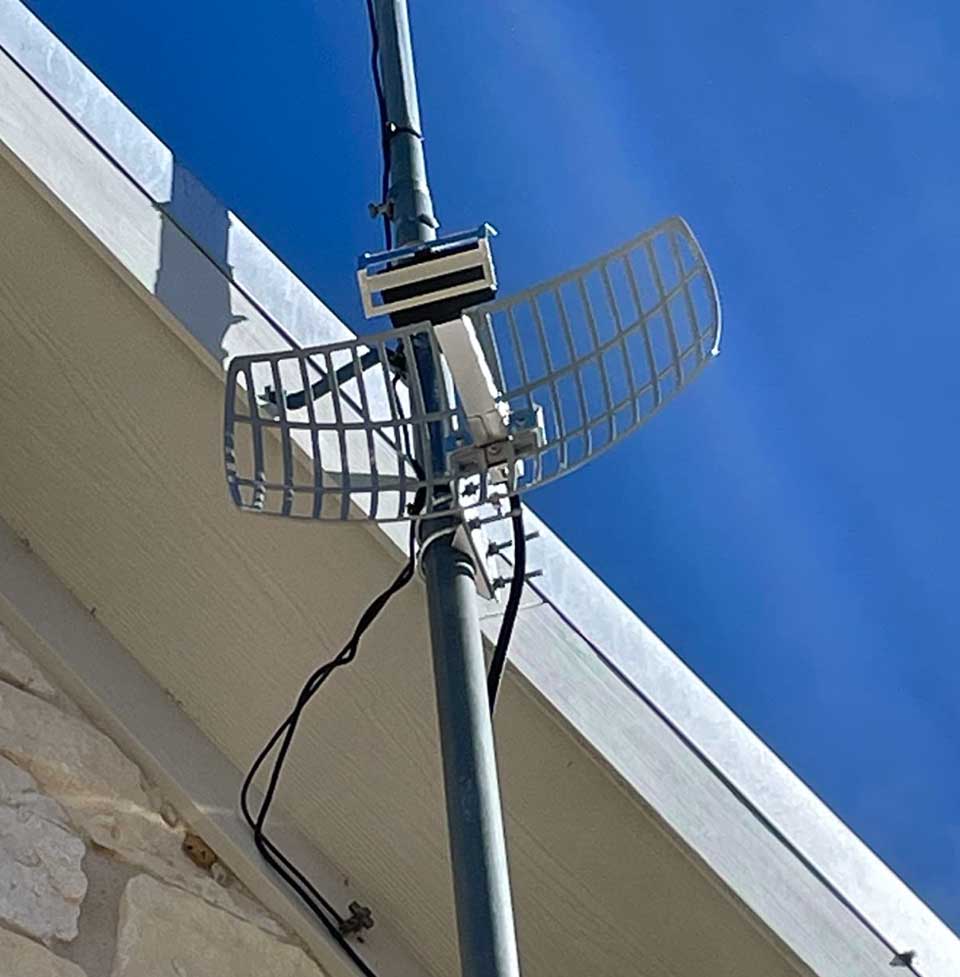
You will have to supply your own mast for mounting purposes, but C. Crane gives you just about everything else you’ll need to get up and running. It measures 15 x 10 x 8 inches and weighs 3.3 pounds, so it’s easy to transport and set up in your desired area.
Once you have it installed, you can enjoy faster streaming speeds and improved video clarity. It can typically support two users watching SD-quality streams. But if everyone is using it to browse the internet, it can support multiple users. Just be aware that your speed with drop the farther away you are from the source. That’s to be expected, and this is an excellent value buy for stable and extended WiFi coverage in your home or office.
What we liked:
- Heavy-duty antenna reduces interference from other networks
- Simple and easy setup for basic users
- Supports all devices, including gaming consoles and smart TVs
- Can save on internet expenses for remote locations
What we didn’t like:
- As distance increases, speed is reduced
- It’s expensive compared to others
Best Alternative: WAVLINK Outdoor WiFi Extender

Key features:
- Dual-band performance up to 5GHz 867Mbps and 2.4GHz 300Mbps
- Weatherproof and heat-resistant case with IP65 rating
- Power over Ethernet (PoE) support
- Multiple operation modes, including AP, Repeater, Router, WISP
WAVLINK’s Outdoor WiFi Extender proved to be both powerful and versatile, which is impressive given its budget-friendly price. It performs admirably in extending WiFi from outside. And a large part of that is thanks to its dual-band performance of up to 5GHz 867Mbps and 2.4GHz 300Mbps. As such, you can stream, game, and perform other bandwidth-intensive tasks.
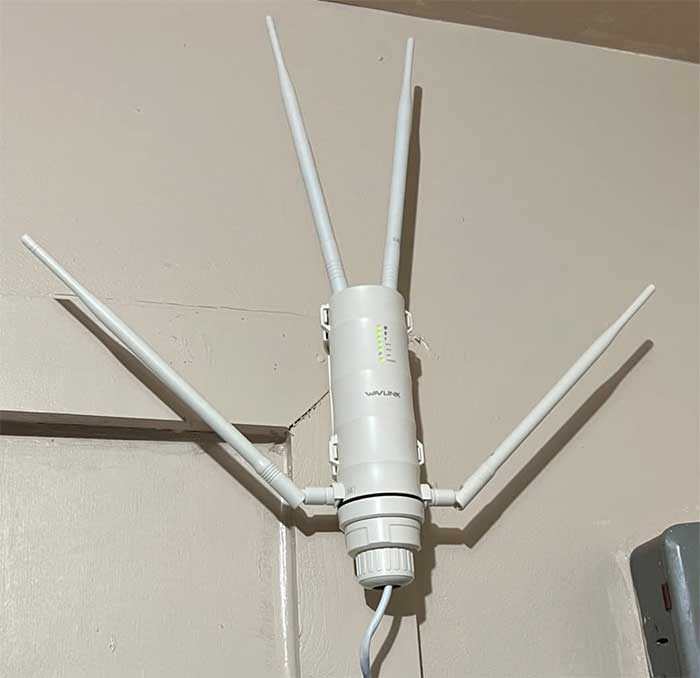
Our tests revealed that it could keep up to 64 devices connected simultaneously, which is impressive in its own right. On top of that, the upgraded MT7621A chip allows for seamless HD streaming and online gaming. The device complies with IEEE 802 11 ac/a/b/g/n standards, ensuring maximum compatibility with different routers.
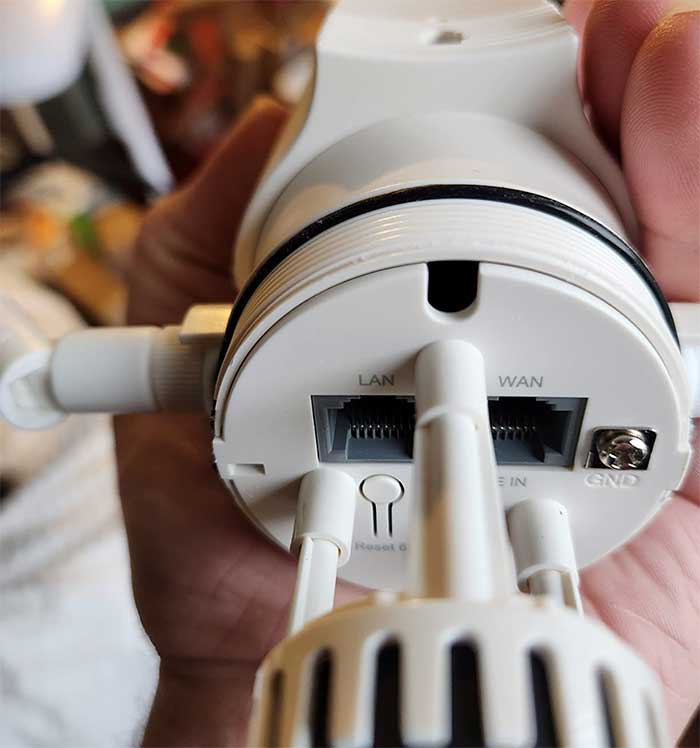
Since this is designed to be an outdoor unit, it boasts an IP65 rating, which translates to a case that’s weatherproof and resistant to heat. In fact, it will continue to operate in temperatures ranging from -30°C to 70°C (-22°F to 158°F). Additionally, the device is equipped with 15KV ESD and 4KV lightning protection, ensuring stable connections in extreme outdoor conditions.
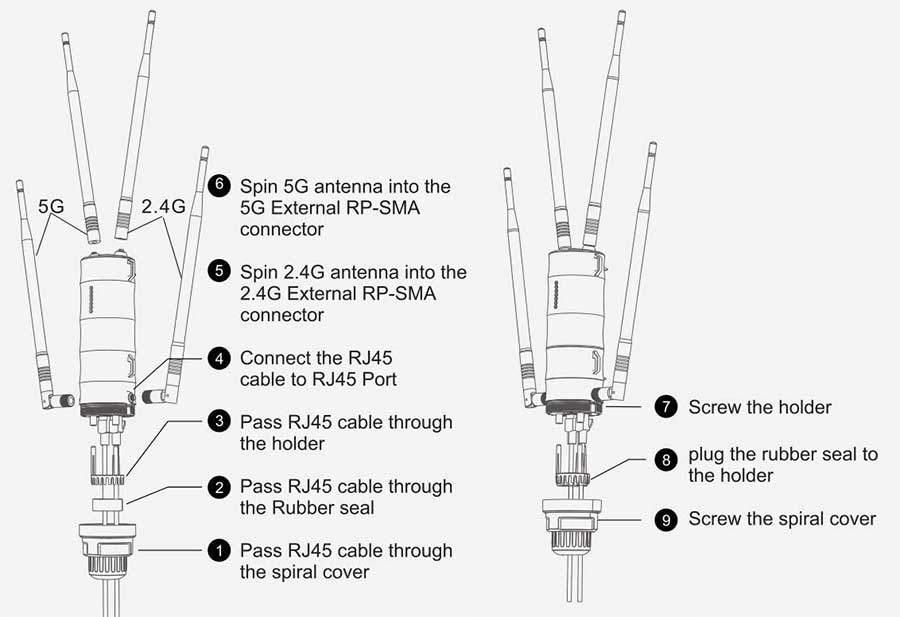
Another great feature of this outdoor extender is its Power over Ethernet (PoE) support, which means that it can be installed in areas where power outlets are not available. The device has dual gigabit Ethernet ports that provide 10x faster speeds than standard Ethernet ports, ensuring an excellent network speed experience. It also offers multiple operation modes, including Router, WISP, Repeater, and AP modes. Under the AP mode, it provides client and client+repeater modes for various wireless solutions.
WAVLINK’s extender measures 14.33 x 4.84 x 2.91 inches and weighs 1.63 pounds, which is quite light considering its features and capabilities. This results in relatively effortless installation and setup.
What we liked:
- Supports up to 64 devices simultaneously
- Fast gigabit Ethernet ports for excellent network speed
- Withstands harsh outdoor environments
- Multiple operation modes for different wireless solutions
What we didn’t like:
- Customer support is lacking
- Range isn’t always consistent
Best 2nd Alternative: TP-Link EAP225-Outdoor
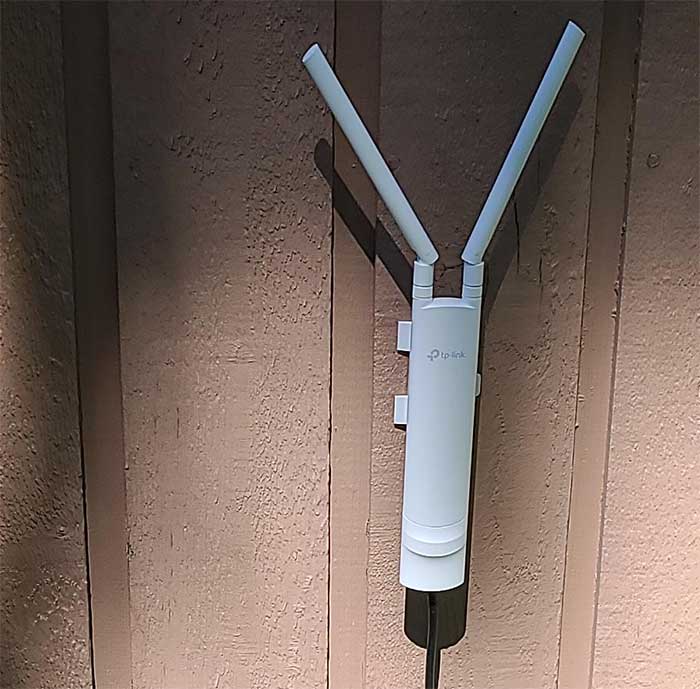
Key features:
- Dual-band WiFi speeds up to 1200 Mbps
- Durable, weatherproof enclosure for outdoor use
- Integrated into Omada’s Software Defined Networking platform
- Supports Mesh WiFi, Seamless Roaming, and Beamforming technologies
WiFi range extenders tend to be pricey, especially for the ones that work well. TP-Link’s EAP225-Outdoor dual-band access point provides stable wireless coverage of up to 200m+ range at 2.4GHz and 300m+ at 5GHz in outdoor settings. And it does so at a price that’s highly affordable. It is equipped with the latest 802.11ac technology. That means you’ll be treated to 1,200 Mbps WiFi speeds across multiple devices at the same time.
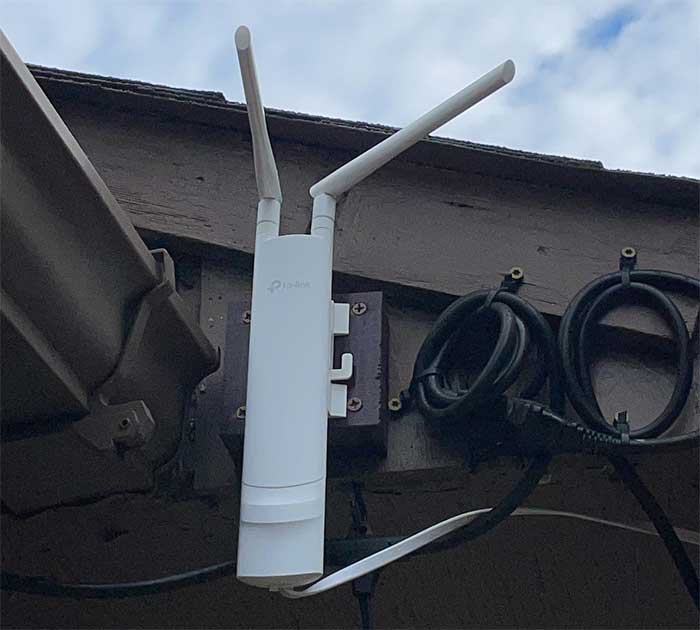
The access point comes in a durable, weatherproof enclosure that serves to protect the unit against harsh outdoor conditions. Like its EAP610 brethren, this one sports a discreet appearance that blends in well just about anywhere you put it. And with a measurement of 8.46 x 1.81 x 1.05 inches and a weight of 1.4 pounds, you’ll find it quite easy to mount the EAP225-Outdoor in your desired spot. After testing the unit outside to gauge its performance, we were pleased to find that it delivered a reliable WiFi connection
Omada’s Software Defined Networking (SDN) platform seamlessly connects network devices, including gateways, access points, and switches – all with a multitude of control alternatives. With this cutting-edge cloud feature, you can manage your entire multisite system from any place in the world through a single interface.
The unit also supports much of the latest tech found in TP-Links’s pricier offering, such as:
- Seamless Roaming
- Mesh WiFi
- Airtime Fairness
- Band Steering
- Beamforming
Notably absent is Load Balancing technology, but given the lower price point, that’s to be expected. It does, however, support both 802.3af/at PoE and Passive PoE power supply. And as a result, deployment is effortless and flexible.
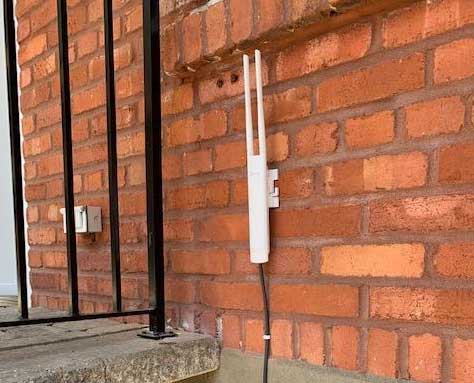
Overall, the TP-Link EAP225-Outdoor access point is a solid choice for businesses and homeowners seeking stable wireless coverage in outdoor settings. Its discreet appearance, durability, and advanced wireless technologies make it a compelling option for anyone looking to enhance their WiFi coverage.
What we liked:
- Remote cloud access via Omada app
- Multiple PoE options for easy installation
- Stable wireless coverage up to 200m+
- Discreet appearance can fit any indoor scenarios
What we didn’t like:
- Not compatible with non-SDN controllers
- Price may not be suitable for all budgets
Outdoor WiFi Range Extender FAQs
What is an outdoor WiFi range extender?
These extenders serve to enhance the range of a WiFi network beyond the walls of your home or office. It is usually mounted outside and can help you to get a better signal in your backyard, patio, or other outdoor areas.
How does an outdoor WiFi range extender work?
An outdoor WiFi range extender works by receiving the existing WiFi signal from your router and then rebroadcasting it to extend the coverage area. It is essentially a wireless repeater that amplifies the signal and helps to eliminate dead zones.
What factors should I consider when choosing an outdoor WiFi range extender?
When choosing, you should consider factors such as its range, speed, durability, and compatibility with your existing router.
Can I install an outdoor WiFi range extender myself?
Yes, most come with easy-to-follow installation instructions and can be installed by anyone with basic DIY skills.
Final Verdict
Before you invest in an outdoor WiFi range extender, you want to make sure it has the features and capabilities needed for steady performance. We’ve chosen these four units based on their standout features, affordability, and overall performance, so you can be sure they’re among the best available.
The TP-Link EAP610-Outdoor tops our list because of its advanced WiFi 6 technology, impressive speeds, and weatherproof enclosure. It also supports Mesh WiFi, Seamless Roaming, and other advanced technologies.
C. Crane’s Vector Extended Long Range WiFi Receiver System proved to be another smart choice for remote locations. Although pricey, its durable parabolic antenna receives signals up to 3 miles away, and it can replicate WiFi signals to multiple devices.
For those on a budget, WAVLINK’s Outdoor WiFi Extender offers dual-band performance and multiple operation modes and can support up to 64 devices simultaneously.
And lastly, the EAP225-Outdoor from TP-Link offers stable wireless coverage at an affordable price. It’s integrated into Omada’s SDN platform, so it comes with some nice technological perks.
Bottom line, these four outdoor WiFi range extenders offer a range of features to suit different needs and budgets. Whether you’re looking for advanced technology or a reliable budget option, there’s an option here for you.
Meet Ry, “TechGuru,” a 36-year-old technology enthusiast with a deep passion for tech innovations. With extensive experience, he specializes in gaming hardware and software, and has expertise in gadgets, custom PCs, and audio.
Besides writing about tech and reviewing new products, he enjoys traveling, hiking, and photography. Committed to keeping up with the latest industry trends, he aims to guide readers in making informed tech decisions.


I need one that uses WiFi connection not a hard wire Ethernet connection. Is there a solution?
I’m looking for something similar.
TP-Link CPE510, in the FEATURES section it says: ” Instead of setting it up as just an access point, you can set it up as a client. This means that it will receive a signal wirelessly, and rebroadcast it in another direction. This means that you don’t have to wire it into your router, although you do need to place it in an area where you already have a strong wireless signal. “
Thanks for your article, it helped quite a bit. We have two metal buildings, say 200 ft. apart. Only one building has internet access. Would two of the TP-Link CPE510 devices pointed directly at each other provide a usable extension of our wired network in the receiving building? In other words, would this be the same as running a connecting ethernet cable across the way, only a little slower? Any advice would be appreciated. Thanks.
Ok here’s my challenge I’d like to set 2 wireless security cameras on my property. One that monitors my patio, and the other one will be installed on my garage facing My back door. My cable router/WiFi is in my basement. My garage is approximately 30′ from my brick home. What would provide the best wifi signal to the exterior cameras.
Currently when I have my cell phone outside next to my garage and look at my WiFi . It’s fairly weak.
Regards, Phill
I need one for use in my RV to pick up a weak signal from WALMART main building into my RV
Try WiFI Ranger – they are specifically made for RV and some models can get 2 mile range
Hi: I have a wireless camera system and a large yard .my gate camera is about 300 f t from the house . the signal is week and itermitant I need a extender at the house to pick up and magnnify the sig to the nvr in the house!! What brand and modle would work and what spec’s do I need? I think a plug and play system would help me as I am not savey to these things. I don’t have a router as I only use Dieal UP.I am retired on limitive INCOME, so I can’t do expencive stuff. Please Email your Idea’s. Thanks: Terry
Fantastic review, I appreciate the time you’ve spent putting details of these devices together. It appears the range limit for these devices is ~300′. I would be thoroughly interested in another review like this, with a focus more on extending a wireless network over thousands of feet, instead of hundreds (I intend to use solar to power repeaters/end-points).
Again, great work and thank you!
I need an extender from a laundromat to a car wash which is about 250 or so feet away no one is on the network but a few washing machines so I don’t need to have 360 coverage just directional or straight line what would be the best for me
I have a router that works fair in our large house. I would like to extend the WiFi out to the yard. I built a “she shed” for my wife, who loves being connected, and it’s about 70 yards from the house.
From our bedroom upstairs I tried a repeater that takes the existing WiFi signal and broadcasts it out through the glass window. Even though it is direct line of site to the shed, it is too weak to go the distance through the window and 70 yards.
Any ideas how to do this? not much obstruction from the downstairs location of the router in the family room, or very direct clear line from the upstairs.
Thanks,
Peter, Texas.
looking to extend signal at my rv park around 15000sq ft, have any suggestions?
Terrific article – thanks for the research! Answered my questions well enough to prepare for the flood of teenagers that will soak up bandwidth in our private forest.
Is there a router I can use for reselling internet WiFi to a large population.
I manage a rv park and I’m looking to get an outdoor wifi extender so my tennets can pick up the wifi so I need tut o know which one to get that will reach a long way any suggestions?
I have 2 TP-Link CPE510 pointed at each other and they work really well to extend my network to a barn where I have an office. They are very reliable – never need rebooting. The distance is about 250 feet, and I’m shooting through a tree. Highly recommended!